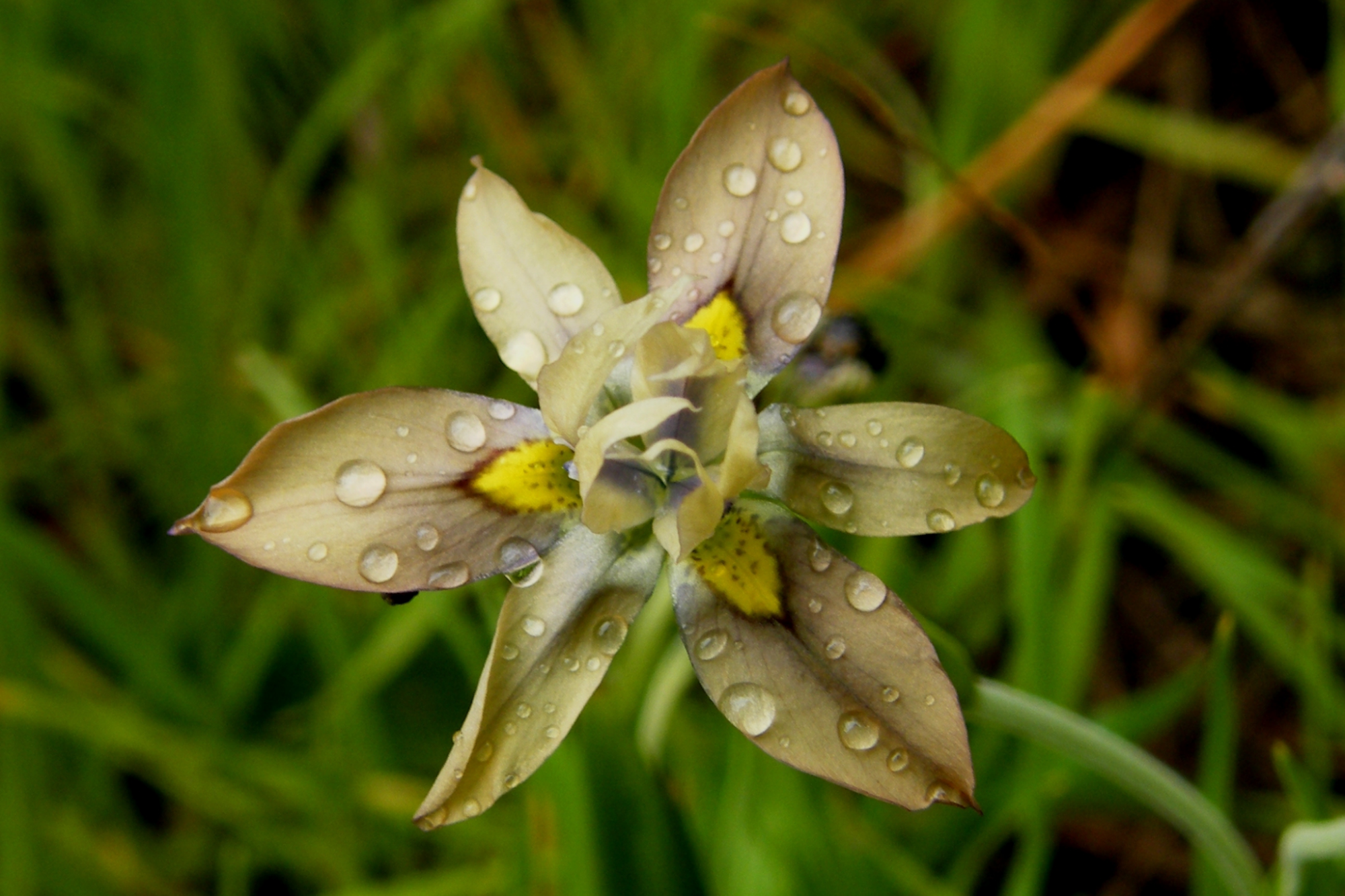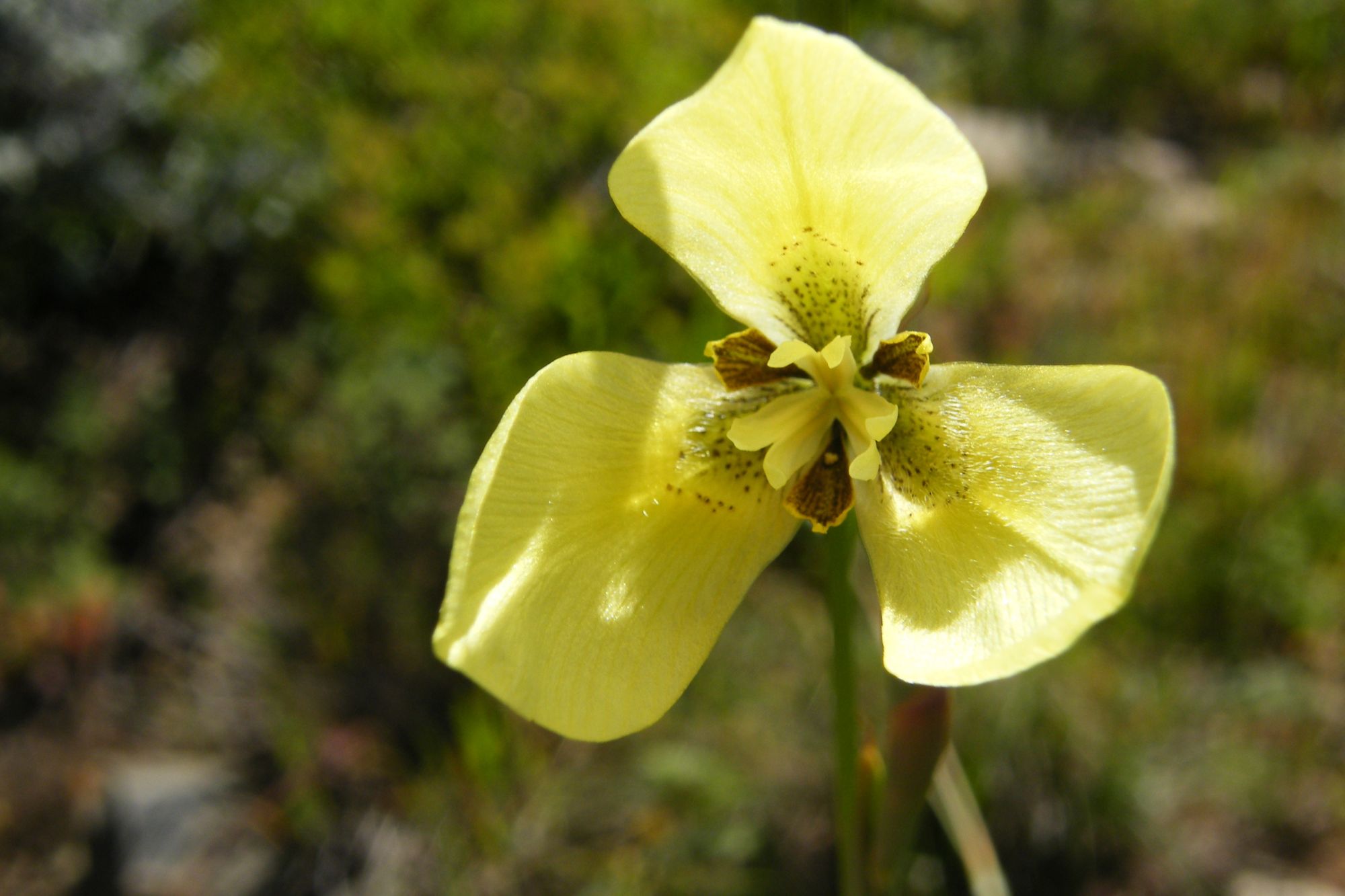Wild Irises of the Western Cape
The family Iridaceae includes 33 genera that are native to southern Africa. This region has the highest diversity of Iridaceae in the world. The family comprises some spectacular blooms, including the genera Watsonia, Gladiolus, Ixia, Freesia, and Dietes.
The genus Moraea of the family Iridaceae comprises bulbous plants, mostly concentrated in southern Africa with 184 species. Here, these plants are commonly referred to as wild irises, uintjies or tulips. Some Moraea species are small and inconspicuous, while others have large, showy flowers. Moraea flowers have three large outer petals, resembling an iris flower, each with a bright nectar guide near the base, and three smaller inner petals (Figure 1). The nectar guides attract pollinators. Moraeas have bifacial leaves which means that the upper and lower surfaces of the leaf differ.

Figure 1:Moraea Vegeta [Acknowledgement: Andrew Massyn - commonswiki
(CC BY-SA 3.0)]
A specific beetle-pollinated group of Moraeas, referred to as the peacock moraeas (Ebrahim, Von Witt & Cohen 2005; Steiner 1998), has six species, all with prominent iridescent nectar guides on the outer petals, resembling the eyes of a peacock. The six species are Moraea aristata (Critically Endangered), M. calcicola (Endangered), M. gigandra (Endangered), M. loubseri (Critically Endangered), M. tulbaghensis (Endangered), and M. villosa (Vulnerable). M. neopavonia was at first considered as the seventh member of the peacock moraeas (Steiner 1998), but this species is now seen as part of M. tulbaghensis.
The Endangered Moraea gigandra (Figure 2) has large, showy purple to deep blue flowers and could easily be regarded as one of the most striking moraeas. Some species such as Moraea ciliata, M. fugax, M. gawleri, and M. tripetala are more widespread. A striking, also widespread, and locally common species is M. bellendenii (Figure 3). This yellow-flowered geophyte is common on sandy slopes and flats in the Western Cape and grows to a height of 50 – 100 cm. The species is multi-branched, with a solitary leaf and due to its height, stands out in natural vegetation.
Given the number of species in the genus Moraea, the different flowering times, as well as the wide range of habitats in which they occur, visitors to CapeNature Reserves have good opportunities to see some examples of this very interesting and striking genus.
Figure 2: Moraea Gigandra [iNaturalist © desertnaturalist (CC-BY-4.0)]

Figure 3: Moraea Bellendenii [Andrew Massyn - commonswiki (CC BY-SA 3.0)]
References:
Ebrahim, I., Von Witt, C. & Cohen, C. 2005. Peacocks, ploughs and porcupines. The plight of the peacock moraeas. Veld & Flora, December: 185-187.
Steiner, K.E. 1998. Beetle pollination of peacock moraeas (Iridaceae) in South Africa. Plant Systematics and Evolution 209: 47-65.